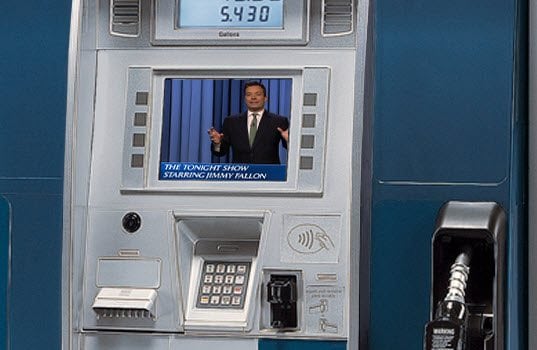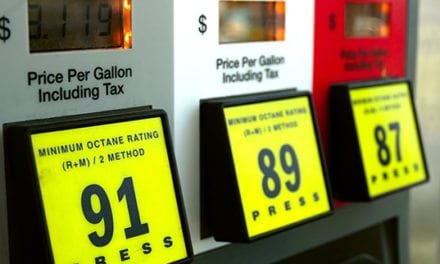By: Dan Yienger, Senior Vice President and General Manager of Petroleum for Verifone.
The EMV liability shift that is applicable to all in-store credit and debit card transactions is now in effect, and gas stations and c-stores are beginning to explore ways to upgrade their fuel dispensers to accept EMV in time for the October 2017 liability shift, which applies to the petroleum forecourt.
Unlike in-store payment devices, which are typically replaced every 3-5 years, integrated fuel dispenser payment devices are considerably more expensive and are often used for 10 years or more before being replaced. With this in mind, along with the fact that EMV is just one of the many evolutions consumers are starting to see at the counter, and will begin to see at the pump, gas stations and convenience stores should be especially thoughtful as to what the future has in store (no pun intended) for payments and commerce when evaluating EMV solutions for the petroleum forecourt.
1. INNOVATION DOESN’T END WITH EMV: When it comes to new payment methods in the U.S., it’s safe to say that EMV is the most dominant in the minds of merchants and consumers alike due to the recent liability shift kick-off and the focus it’s receiving in the press. Despite all of EMV’s attention, let’s not forget about all of the recent merchant and consumer interest over NFC and mobile wallets—especially when Apple Pay became available in the U.S. and the UK less than six months ago. It was only until October 1st was a month or so away that the topic of mobile payments was arguably more popular than EMV amongst consumers and in the press. In short, when you select an EMV solution for your fuel dispensers, make sure it also has the ability to support other payment methods that will likely become increasingly preferred by consumers in the future.
2. BOREDOM AT THE PUMP IS BECOMING A THING OF THE PAST: What do you do while you’re at the pump filling up your tank? You’re either zoning out, using your mobile phone—despite advisories not to do so—or regretting the time being wasted as you stand there pumping gas. This is changing, as gas stations and local and national advertisers are beginning to recognize this “down time” at the pump as a way to entertain and engage consumers that are on the path to purchase.
Today, gas stations are increasingly working with nationally recognized content partners to entertain, inform and engage consumers while they fill their tanks. The key is to capture consumers’ attention during idle time they find themselves with while pumping gas. This can be accomplished by with new digital media solutions that deliver national and local news updates and entertaining content through multimedia touchscreens that are integrated with the fuel dispenser. Mixing this content with loyalty and promotional incentives for in-store products enables c-stores to leverage the pump in ways that help entice customers to enter the store. Certain solutions even continue engaging customers after they enter the store.
For instance, while customers are purchasing merchandise at the counter, digital customer-facing touchscreens present them with targeted promotions, discounts and other money saving incentives, which are targeted specifically according to what they’re purchasing at that moment.
The potential for this type of solution to drive sales is being noticed by c-stores of all sizes. A large, well-known petro/c-store chain recently announced plans to deploy an integrated at-the-pump and in-store digital advertising solution across the majority of its locations. And, a small regional petro/c-store chain reported that its locations that deployed the solution immediately saw a six percent jump in in-store sales compared to its locations that weren’t using the solution.
The ability to engage consumers in such a way is clearly beneficial for store owners and brand advertisers alike; however, it’s particularly valuable in the petro space, especially if the increased revenues can help offset some of the expenses related to EMV migration in the petroleum forecourt.
3. WORK SMARTER, NOT HARDER: Remotely accessing information and streamlining day-to-day activities is easier today than perhaps ever before thanks to “the cloud.” In fact, the cloud is now even gaining traction in petro space. For instance, just recently at the 2015 NACS Show in Las Vegas, Tri Star and truenorth both announced they’re rolling out the fastest site management platform in order to increase speed in at-the-pump and in-store payment acceptance, fueling operations and back office control. In addition to reducing complexity by separating payment, fuel and POS software for easier management, the solution’s cloud-based software management tool allowing managers and owners to track real time data for all aspects of their business, including payment, in-store and forecourt operations. It’s compatible with all browsers and supported on mobile devices through which store managers can access a graphical set of operational matrixes that are easy to navigate.
The ability to accept EMV at the pump will be equally as important as being able to accept it at the counter. However, the reality for gas stations and c-stores is that they’ll be stuck with whatever technology upgrades they make to accept EMV in the petroleum forecourt for a decade or more—unless they want the added expense of having to, yet again, install new payment technology before then.
Therefore, it’s critical for gas stations and c-stores to think beyond EMV while evaluating EMV solutions for the petroleum forecourt. Consumer preference—like innovation—is ever changing. Don’t rollout a solution that will meet the needs of today, only to become obsolete tomorrow. Make sure your solution will simplify and expedite your move to EMV, while at the same time offering you a flexible, standardized payment system that is easy to use and can grow with future business needs.
 Dan Yienger is Senior Vice President and General Manager of Petroleum for San Jose, Calif.-based Verifone, and works with gas stations and convenience stores throughout the U.S. to solve their biggest payment challenges and enhance operations.
Dan Yienger is Senior Vice President and General Manager of Petroleum for San Jose, Calif.-based Verifone, and works with gas stations and convenience stores throughout the U.S. to solve their biggest payment challenges and enhance operations.








